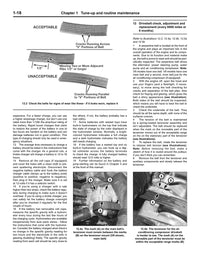There are few things more irritating than finding random mystery wet spots inside your car's interior! But what causes them, and how do you fix the most likely culprits? Perhaps more importantly, how do you clean up this soggy mess and get rid of the musty smell?
Diagnosing a leak in your car
Finding the water in your car isn't hard – It usually collects in the lowest spot, the foot wells! But diagnosing where it came from is notoriously hard.
We all know that water obeys the laws of gravity, so will always pool in the lowest area – but it can run along wires, travel up cardboard and fabric surfaces, and generally do its best to disguise where it came from in the first place!
The first clue to help find the leak is WHEN it happens? Is it after a rain storm or car wash? Only when the car's parked on a slope? Was it just after using the heat or defroster for the first time in a long time? Or maybe the AC? Identifying when can potentially narrow down where and why.
If it leaks even when it hasn't rained or the car hasn't been washed, then it's coming from somewhere within the car itself. If it only happens when the car is parked on a slope, it's probably a failed weatherstripping seal or blocked sunroof drain. Here's a more detailed rundown...
Potential causes of leaks in your car
Windshield rubber

Sunroof

Cabin filter

Windshield rubber

Door Membrane
Behind the door panel there is a plastic or foam membrane, designed to keep moisture that makes its way into the door from getting into the interior. Water can enter the body of the door when it rains, and generally drains out of holes in the bottom. The door is sealed all the way around by weatherstripping, and holes are situated so any water drains to the exterior, on the other side of the seal..
If the membrane gets ruptured or torn, or the drain holes get plugged, water can run down the membrane and soak into the door panel. If you're getting a pool of water in the footwell, check to see if the bottom of the door is damp or has evidence of water staining. If it does, whip the door panel off and check the condition of the membrane. Use waterproof tape to repair any tears, or replace the membrane entirely with plastic sheet.
Door Seal
The rubber seal around the edge of the door can also sometimes be a cause of leaks. If the seal gets damaged, or dries out, water will track down the front of the door and into the car. A visual inspection is usually sufficient to diagnose whether this is the culprit. If the weatherstripping is not 100% replace it.
Window Seal
There is also the rubber seal that rests against the side windows - the bit the glass rubs against when you wind them up/down. If this isn't tight on the glass it can let too much water enter the door cavity (a little is to be expected). When that happens it can end up overcoming the membrane and soaking into the door panels to cause a leak.
As with the door seals a visual inspection should be able to identify if this is a likely cause.
Heater Core
If there is a leak, and the inside of the car smells like coolant (a sickeningly sweet smell) when it gets warm, the heater core may have sprung a leak. Check to see whether the liquid collecting in the car is antifreeze or water (Don't taste it! Smell it!). Another good indication is if the liquid is only collecting on the passenger side, where most heater cores are located.
The heater core is like a little radiator which water passes through under the dashboard to heat the cabin. If the core corrodes, or one of the connections comes loose, it can leak into the car. Heater cores can be very difficult to access as they are generally buried away behind the dashboard, but if it's leaking a replacement is often the only fix. In an emergency, the heater hoses can often be routed to bypass the core temporarily.
Air Conditioning
Have you ever noticed a pool of water under your car on a hot day after the air conditioning has been on? This is perfectly normal. Sometimes, however, the drain tube can become clogged and cause the water to collect until it finds its way behind the dashboard and into the front carpets. Try not using the AC (or defroster as this sometimes triggers the AC system) and see if the problem persists.
Sunroof
One of the biggest causes of in-car leaks is the sunroof, even when factory-installed, and aftermarket units are notorious! They are known to leak by design – the seal is not usually totally waterproof – but there will be a channel around the sunroof aperture which allows water to flow down drain tubes in the corners, which then run down the door pillars and down to the ground.
Often a leak that only occurs when the car is parked on a slope can be attributed to one or more of the sunroof drain tubes becoming blocked. To test - open the sunroof and poor a small amount of water into the drain tube.
Does it go down straight away, or does is drain very slowly or not at all? The water may even pool in the drain channel, run across the headlining and either drip out of the courtesy light, or even run down the A-pillars and into the carpets.
To fix it you need to find where the drain tube goes, (usually down the A pillar) and disconnect the end and blow through it with an air line – be aware that a surprising amount of filthy smelly water may come out! You may also have luck snaking the drain tube the same way you would the drain on your sink, only with a piece of ordinary wire instead of a pipe snake.
Cabin Air Filter
Some car's cabin air filters are installed in the engine compartment, on the firewall just in front of the windshield. This type can be prone to leaking on some models unless fitted correctly, and the lid secured. If there is any sign of damage to the seal you should replace it.
Windshield Rubber
This is applicable to both the front windshield and rear window – If the rubber surround dries out and cracks, or shrinks, or is fitted incorrectly, water will come into the car. If you've recently had glass replaced and that has coincided with a new leak this could well be the reason. Having the glass refitted with a new seal is the proper cure.

What to do once you’ve found the leak
There's not much point in drying out the car until you identify and stop or at least lessen the leak. Once you do though, you really need to dry out the inside of the car thoroughly because a damp car will go moldy very quickly. Even if it looks clean, there could be mold in the carpet or doors, and you could find yourself driving a car that smells like a compost pile.
So once you've found and fixed the leak - if it's wet and you can remove it, remove it. The seats, carpets and door panels are not particularly hard to remove and put in the sun to dry. Mop up as much liquid as you can with something very absorbent, like kitchen paper towels.
When you've got it as dry as you can, either use a plug-in dehumidifier or a plastic tub full of desiccant left in the car with all the windows closed for 24 hours. Some people also swear by leaving a tray of cat litter in the car too!
It may take time to dry the car completely, so whenever you drive the car have the heater on and windows opened slightly to aid ventilation.

















